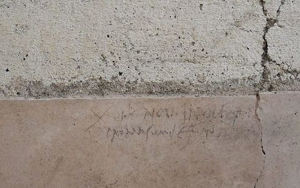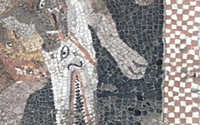|
Pompeii Discovery Literally Rewrites History
October 17, 2018
The ruins of Pompeii continue to surprise. Archaeologists have discovered evidence that the eruption of Mount Vesuvius that rained down ash on Pompeii and Herculaneum happened a full two months later than thought. The traditional dating of the infamous eruption has long been August 24, A.D. 79. That date was assigned in large part to the writings of Pliny the Younger, who witnessed the events from not far away. Now, however, work during a new phase of excavations has uncovered a charcoal writing that clearly reads, in Latin, XVI K NOV; that translates to the 16th day before the first day of November, or October 17. Also uncovered were mosaics showing crocodiles, deer, lions, and other wild animals. Archaeologists found the inscription and mosaics in what is left of two villas, which were partly excavated in the 19th Century. Reporting the discovery was Massimo Osanna, head of archaeology at the site. As for Pliny the Younger, he reported what he saw in a letter to the historian Tacitus 20 years after the fact.
|
Social Studies for Kids |
Social Studies for Kids
copyright 2002–2019
David White






